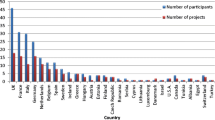Abstract
Through at least the mid-1990s, children were often referred to as ‘therapeutic orphans’ for whom many treatments were administered without the benefit of appropriate studies to guide drug labeling for dosing and other critical therapeutic decisions. At that time, there were no incentives for manufacturers to pursue such work, nor regulatory requirements to compel these studies. Congress addressed this by including an important provision titled the Best Pharmaceuticals for Children Act (BPCA) in the 1997 Food and Drug Administration Modernization and Accountability Act. This was complemented by another key piece of legislation, the Pediatric Research Equity Act (PREA) in 2003. The former Act and its successors created an incentive for firms to study on-patent drugs in pediatric populations by extending the market exclusivity of a medicine by 6 months. The latter was a requirement that provided the US FDA with the authority to require studies of drugs in children if an adult indication also occurs in children.
In the current paper, we consider the effects of both pieces of legislation in terms of the health, societal, and economic benefits they have likely imparted and will continue to provide in the future. We conclude that the gains have been substantial — both in terms of safer and more effective use of medicines in children and in terms of new research that has been incentivized by the BPCA exclusivity provision. We estimate the gross economic benefits from the latter alone to be approximately $US360 billion.







Similar content being viewed by others
References
Li JS, Eisenstein EL, Grabowski HG, et al. Economic return of clinical trials performed under the pediatric exclusivity program. JAMA 2007; 297 (5): 480–8.
Vernon JA, Golec JH, DiMasi J. Drug development costs when financial risk is measured using the Fama-French three-factor model. Health Econ 2010; 19 (8): 1002–5.
Abdullah F, Zhang Y, Lardaro T, et al. Analysis of 23 million US hospitalizations: uninsured children have higher all-cause in-hospital mortality. J Public Health 2010; 32 (2): 236–44.
Nordhaus W. Irving Fisher and the contribution of improved longevity to living standards. Am J Econ Sociol 2005; 64 (1): 367–92.
Murphy K, Topel R. The value of health and longevity. J Polit Econ 2006; 14 (5): 871–904.
Lichtenberg FR. Sources of U.S. longevity increase, 1960–2001. Q Rev Econ Finance 2004; 44 (3): 47–73.
Lichtenberg FR, Virabhak S. Pharmaceutical-embodied technical progress, longevity, and quality of life: drugs as “equipment for your health”. Manage Decis Econ 2007; 28: 371–92.
Vernon JA. Congressional testimony before the U.S. House of Representatives Committee on Energy and Commerce hearing on “Prescription Drug Price Inflation: Are Prices Rising Too Fast?”. December 8,2009 [online]. Available from URL: http://democrats.energycommerce.house.gov/Press_111/20091208/vernon_testimony.pdf [Accessed 2012 Apr 30].
Vernon JA, Golec JH. Pharmaceutical price regulation: public perceptions, economic realities, and empirical evidence. Washington, DC: American Enterprise Institute, 2009
Vernon JA, Golec JH, Lutter R, et al. An exploratory study of FDA new drug approval times, prescription drug user fees, and R&D spending. Q Rev Econ Fin 2009; 49: 1260–75.
Grabowski H, Kyle M. Generic competition and market exclusivity periods in pharmaceuticals. Manage Decis Econ 2007; 27: 1–12.
Pharmaceutical Research and Manufacturers of America. Pharmaceutical industry profile 2010. Washington, DC: PhRMA, 2010 Mar.
Golec J, Vernon JA. New estimates of pharmaceutical research and development spending by US-based firms from 1984 to 2003. Managerial Decis Econom 2007; 28 (5): 481–3.
Vernon JA. New evidence on drug research and price controls. Regulation 2004; 27 (3): 13–4.
Scherer FM. The link between gross profitability and pharmaceutical R&D spending. Health Aff (Millwood) 2001; 20 (5): 216–20.
DiMasi JA, Hansen RW, Grabowski HG. The price of innovation: new estimates of drug development costs. J Health Econ 2003; 22 (2): 151–85.
Acknowledgements
We wish to dedicate this manuscript to the memory of our friend and colleague, John Vernon, who died suddenly on 19 June 2012 during the final stages of publication. John was enthusiastic about this research and the importance of medicines development for children. His intellectual curiosity, creativity, and good nature will be missed.
The authors gratefully acknowledge David Ceryak and Joe Johnston for their insightful suggestions and comments.
Eli Lilly and Company provided funding to support the research for this article.
John Vernon received a research grant for work related to this manuscript in 2011 but not for developing this paper. He has also received consulting fees in years past from the pharmaceutical industry but this work was not related to the subject matter in this paper. Albert Allen, Scott Shortenhaus, and Mark Mayer are employees and stock holders of Eli Lilly and Company. Albert Allen is a member of the Secretary’s Advisory Committee on Human Research Protections. Joseph Golec has received payment from Pfizer for research on a topic unrelated to the one in this paper.
Author information
Authors and Affiliations
Corresponding author
Rights and permissions
About this article
Cite this article
Vernon, J.A., Shortenhaus, S.H., Mayer, M.H. et al. Measuring the Patient Health, Societal and Economic Benefits of US Pediatric Therapeutics Legislation. Pediatr Drugs 14, 283–294 (2012). https://doi.org/10.1007/BF03262234
Published:
Issue Date:
DOI: https://doi.org/10.1007/BF03262234




